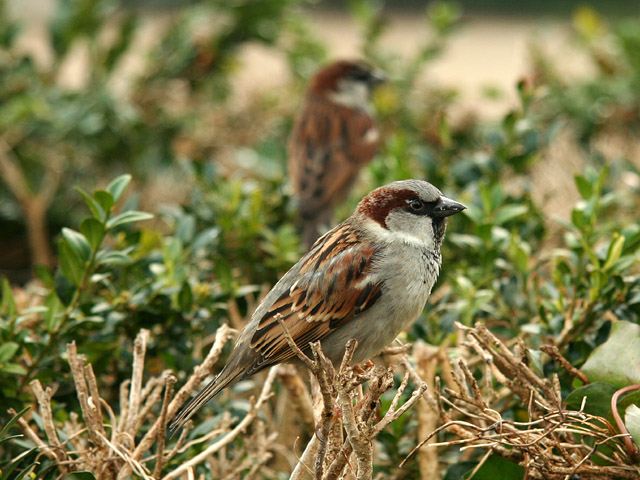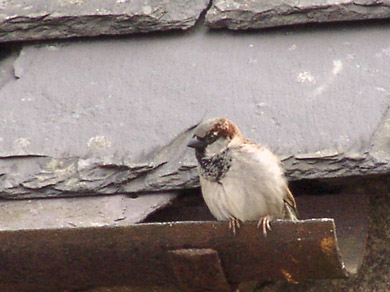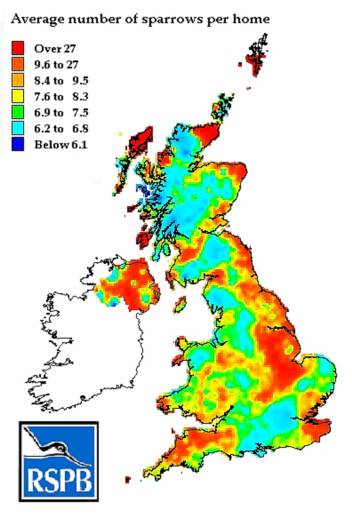"Wherever people build, House Sparrows sooner or later come to share their abodes"


A gutter and a missing roof tile or an eaves-level nestbox
-
all that a sparrow asks for to make a home
Across Northern Europe, the friendly chirp of house sparrows is falling silent, particularly in some of the great cities that used to be strongholds of millions of sparrows. This seems to be a late 1990s/early 2000s phenomenon, in letters to the Independent Newspaper the year 1997 was fingered as a particularly notable year of decline, though this, like so many observations to do with sparrows, is anecdotal.
The scientific method is tough to apply consistently in the varied and ever-changing urban landscape preferred by sparrows. It is hard to separate the variables, hard to stop people changing things across the area during a several-year observation period and difficult to tease out clear causes of the decline from the many changing parameters. On the 16th May 2000 the Independent newspaper offered a £5000 prize for
London lost three-quarters of its sparrows in the six years preceding the millennium.
The decline of this once common bird garnered widespread interest and publicity from several newspapers. There have been several UK house sparrow surveys using public effort, here are some of them. The tragedy, of course, is that much of the survey work took place after much of the decline has happened. Joni Mitchell was right, you don't know what you've got till it's gone.
2002 House Sparrow Questionnaire (BTO)
The questionnaire was sent out in 2002 to all BTO Garden BirdWatchers and to any other people interested in contributing their observations to the survey.
Results and summary are available on the BTO website
In July the BTO issued a research report RR290 Investigation into the causes of the decline of Starlings and House Sparrows in Great Britain

2003 Sparrowatch (RSPB)
The RSPB frequently changes older URLs, so the results of this have been lost from the public Web. Some of this is from the Internet Archive
A quarter of a million people looked for sparrows on the 18th of May 2003, this was early enough to count the adults breeding but not too late so that juveniles would skew the results
"It may seem surprising, but house sparrows are in trouble. The RSPB's Sparrowatch will help us find out more about why, and what we could all do to help them..."
The summary picture on the right is from the Internet Archive, I wasn't able to find a copy on the RSPB website
2005 Dr Kate Vincent PhD thesis
By analysing the traces of food components incorporated into the feathers of the chicks Kate Vincent determined that the invertebrate to plant matter proportion fed to the chicks was lower when brood survival was below average
This would correspond with a lower availability of insects in the urban environment, which matches other incidental observations.
2006 BTO Field Survey
A more extensive field survey of house sparrows built on the BTO's earlier work with the questionnaire
Sadly the report on this which would be interesting, titled "House sparrow habitat use in urbanized landscapes"is behind a paywall.
The data from this and some subsequent studies fed into the BTO Research Report No. 599 "Habitat preferences of House Sparrows".
2012 Cockney Sparrow Count (RSPB)
Targeting London specifically, and there was a handy ID sheet
A summary of the results can be found at GiGL
Helping your sparrows
You can help your hard-pressed local sparrows in various ways.